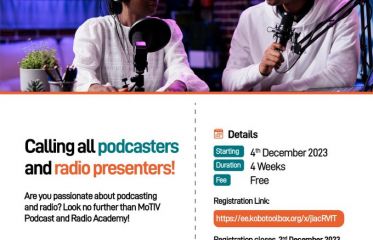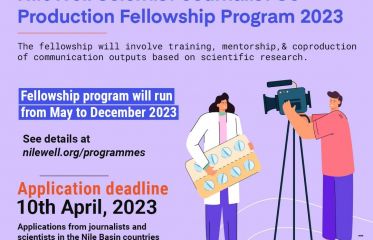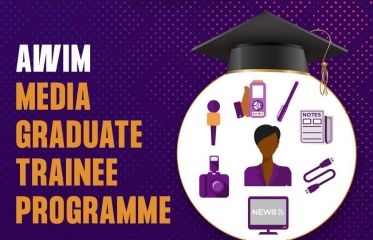Breaking News
- Flexible Remote Work Opportunity for University Students: Earn $100–$250 Per Month ...Read More
- Ministry of Education and Sports Azerbaijan Government Scholarships For 2025-2026 Academic Year ...Read More
- Government Sponsorship Undergraduate Admission Lists 2025-26 for Makerere University ...Read More
- Ministry of Education And Sports: Egyptian Government Scholarships 2025-2026 Academic Year ...Read More
- Ground Breaker Full Scholarship for girls to study Software Engineering 2025 July Intake ...Read More
- Tony Elumelu Foundation Entrepreneurship Programme (TEEP) 2025 for young African Entrepreneurs ...Read More
- DESIGNING FUTURES 2050 International Design Competition 2025 (€15,000 prize) ...Read More
- Ground Breaker Full time Scholarship for girls to study Software Engineering 2025 Intake ...Read More
- Ministry of Education And Sports Algerian Vocational Training Scholarships for 2024-2025 AY ...Read More
- Ministry of Education and Sports Advert for the Algerian Government Scholarships for 2024-2025 ...Read More
CopyWriter
Write advertising copy for use by publication or broadcast media to promote sale of goods and services.
Add to FavouritesWrite advertising copy for use by publication or broadcast media to promote sale of goods and services.
Also known as: Account Executive, Advertising Associate, Advertising Copy Writer, Advertising Writer, Communications Specialist, Copy Writer, Copywriter, Freelance Copywriter, Production Director, Web Content Writer
Uganda's businesses are growing very fast and there is need to market these businesses to consumers so the role of the copy writer is to creatively think of the ways to target customers.
Daily Activities / Routine Tasks
1. Write to customers in their terms and on their level so that the advertiser's sales message is more readily received.
2. Discuss with the client the product, advertising themes and methods, and any changes that should be made in advertising copy
3. Write advertising copy for use by publication, broadcast, or internet media to promote the sale of goods and services.
4. Present drafts and ideas to clients.
5. Vary language and tone of messages based on product and medium.
6. Consult with sales, media and marketing representatives to obtain information on product or service and discuss style and length of advertising copy.
7. Edit or rewrite existing copy as necessary, and submit copy for approval by supervisor.
8. Develop advertising campaigns for a wide range of clients, working with an advertising agency's creative director and art director to determine the best way to present advertising information.
9. Write articles, bulletins, sales letters, speeches, and other related informative, marketing and promotional material.
10. Conduct research and interviews to determine which of a product's selling features should be promoted.
11. Invent names for products and write the slogans that appear on packaging, brochures and other promotional material.
12. Review advertising trends, consumer surveys, and other data regarding marketing of goods and services to determine the best way to promote products.
Main Activities
Thinking Creatively — Developing, designing, or creating new applications, ideas, relationships, systems, or products, including artistic contributions.
Updating and Using Relevant Knowledge — Keeping up-to-date technically and applying new knowledge to your job.
Getting Information — Observing, receiving, and otherwise obtaining information from all relevant sources.
Communicating with Supervisors, Peers, or Subordinates — Providing information to supervisors, co-workers, and subordinates by telephone, in written form, e-mail, or in person.
Making Decisions and Solving Problems — Analyzing information and evaluating results to choose the best solution and solve problems.
Establishing and Maintaining Interpersonal Relationships — Developing constructive and cooperative working relationships with others, and maintaining them over time.
Identifying Objects, Actions, and Events — Identifying information by categorizing, estimating, recognizing differences or similarities, and detecting changes in circumstances or events.
Interacting With Computers — Using computers and computer systems (including hardware and software) to program, write software, set up functions, enter data, or process information.
Organizing, Planning, and Prioritizing Work — Developing specific goals and plans to prioritize, organize, and accomplish your work.
Documenting/Recording Information — Entering, transcribing, recording, storing, or maintaining information in written or electronic/magnetic form.
Monitor Processes, Materials, or Surroundings — Monitoring and reviewing information from materials, events, or the environment, to detect or assess problems.
Estimating the Quantifiable Characteristics of Products, Events, or Information — Estimating sizes, distances, and quantities; or determining time, costs, resources, or materials needed to perform a work activity.
Provide Consultation and Advice to Others — Providing guidance and expert advice to management or other groups on technical, systems-, or process-related topics.
Developing and Building Teams — Encouraging and building mutual trust, respect, and cooperation among team members.
Scheduling Work and Activities — Scheduling events, programs, and activities, as well as the work of others.
Specific Work Activities
1. Confer with clients to determine needs.
2. Edit written materials.
3. Present work to clients for approval.
4. Write advertising or promotional material.
5. Develop promotional strategies or plans.
6. Collaborate with others in marketing activities.
7. Conduct market research.
8. Monitor current trends.
Key Abilities
Visualization — The ability to imagine how something will look after it is moved around or when its parts are moved or rearranged.
Far Vision — The ability to see details at a distance.
Near Vision — The ability to see details at close range (within a few feet of the observer).
Oral Comprehension — The ability to listen to and understand information and ideas presented through spoken words and sentences.
Oral Expression — The ability to communicate information and ideas in speaking so others will understand.
Problem Sensitivity — The ability to tell when something is wrong or is likely to go wrong. It does not involve solving the problem, only recognizing there is a problem.
Speech Clarity — The ability to speak clearly so others can understand you.
Speech Recognition — The ability to identify and understand the speech of another person.
Deductive Reasoning — The ability to apply general rules to specific problems to produce answers that make sense.
Inductive Reasoning — The ability to combine pieces of information to form general rules or conclusions (includes finding a relationship among seemingly unrelated events).
Information Ordering — The ability to arrange things or actions in a certain order or pattern according to a specific rule or set of rules (e.g., patterns of numbers, letters, words, pictures, mathematical operations).
Originality — The ability to come up with unusual or clever ideas about a given topic or situation, or to develop creative ways to solve a problem.
Fluency of Ideas — The ability to come up with a number of ideas about a topic (the number of ideas is important, not their quality, correctness, or creativity).
Selective Attention — The ability to concentrate on a task over a period of time without being distracted.
Key Knowledge Areas
Communications and Media — Knowledge of media production, communication, and dissemination techniques and methods. This includes alternative ways to inform and entertain via written, oral, and visual media.
English Language — Knowledge of the structure and content of the English language including the meaning and spelling of words, rules of composition, and grammar.
Sales and Marketing — Knowledge of principles and methods for showing, promoting, and selling products or services. This includes marketing strategy and tactics, product demonstration, sales techniques, and sales control systems.
Customer and Personal Service — Knowledge of principles and processes for providing customer and personal services. This includes customer needs assessment, meeting quality standards for services, and evaluation of customer satisfaction.
Top Skills
Active Listening — Giving full attention to what other people are saying, taking time to understand the points being made, asking questions as appropriate, and not interrupting at inappropriate times. Copy writers have to listen keenly to client needs
Coordination — Adjusting actions in relation to others' actions.
Speaking — Talking to others to convey information effectively.
Critical Thinking — Using logic and reasoning to identify the strengths and weaknesses of alternative solutions, conclusions or approaches to problems.
Operation and Control — Controlling operations of equipment or systems.
Judgment and Decision Making — Considering the relative costs and benefits of potential actions to choose the most appropriate one.
Time Management — Managing one's own time and the time of others.
Complex Problem Solving — Identifying complex problems and reviewing related information to develop and evaluate options and implement solutions.
Monitoring — Monitoring/Assessing performance of yourself, other individuals, or organizations to make improvements or take corrective action.
Operation Monitoring — Watching gauges, dials, or other indicators to make sure a machine is working properly.








































































































































